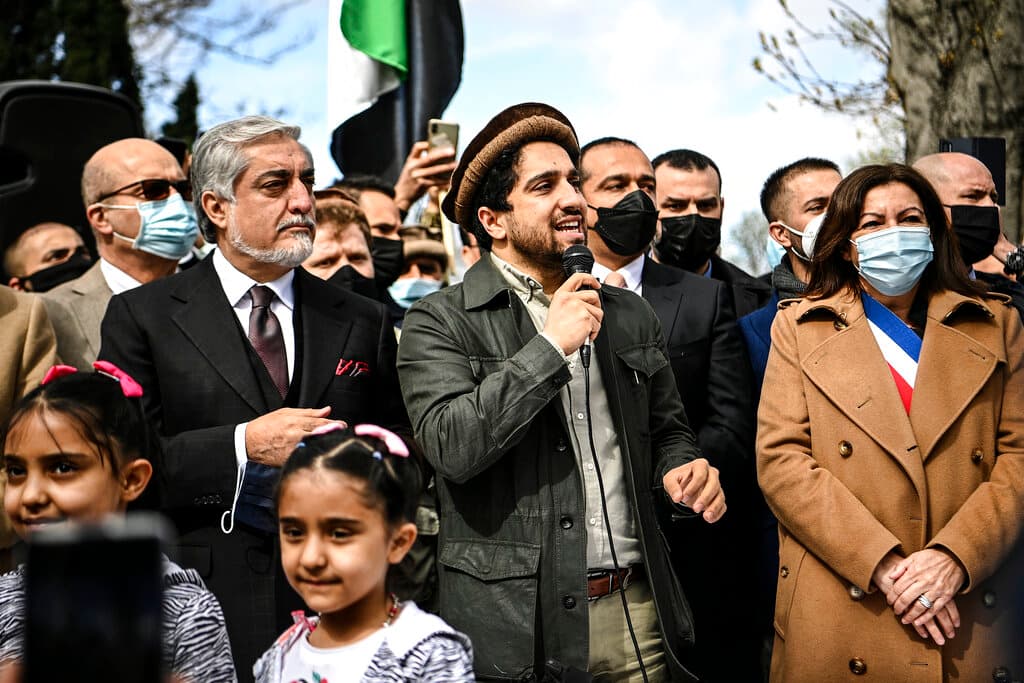Anti-Taliban Groups Gaining in Afghanistan
Say, where is President Biden in this heroic struggle?

Nearly three years after President Biden surrendered Afghanistan to the Taliban, resistance groups there are “gaining strength,” a new report says. The waxing opposition to the Islamic militants comes amid a warning by one of the resistance leaders that an attack on America from terrorist groups being incubated under Taliban rule is “not a matter of if but when.” The FBI director, too, is warning of rising terrorist threats. Is Mr. Biden listening?
It certainly doesn’t seem like it. The president’s stance since his chaotic withdrawal appears to be more along the lines of “out of sight, out of mind.” It’s hard, otherwise, to understand why he would allow billions of dollars to flow to the Taliban regime under the guise of offering humanitarian aid to the Afghan people. That move overlooks the fungibility of money, which means the support frees up other resources the Taliban can use for nefarious purposes.
Mightn’t the money be better spent aiding the resistance fighters who are trying to liberate the country from the Taliban’s benighted rule? Feature, say, the National Resistance Front, “the largest and most active anti-Taliban resistance group,” according to a dispatch in Long War Journal. A product of the Foundation for Defense of Democracies, the journal finds the NRF is growing in strength, but still lacks the resources needed to topple the Taliban.
The NRF leader, Ahmad Massoud, has an esteemed pedigree. He is the son of the Mujahideen leader Ahmad Shah Massoud, known as the Lion of Panjshir for his bravery during the 1980s resistance against Soviet invaders. The NRF “is entering its third fighting season,” the journal reports, and is “primed to expand its operational footprint throughout the country” via “more targeted attacks” in months to come.
Yet the NRF and its peer “anti-Taliban resistance groups,” the journal observes, face a “kaleidoscope of threats on an ever-evolving battlefield.” As the NRF’s head of foreign relations, Ali Nazary, observes, “We are not only fighting the Taliban,” but also “Al Qaeda, the Islamic State, Tehrik-e Taliban Pakistan, and many other groups throughout Afghanistan.” It’s a grim lineup of malign actors.
All the more reason to cheer on the NRF, which has a “democratic, decentralized and pluralistic vision of Afghanistan,” Long War Journal reports. To achieve its aims, the group says it is counting on a broad base of support. “After the fall of the previous government, remnants of the Afghan National Security Forces joined the NRF,” Mr. Nazary tells the journal, “But we also have Pashtuns, Tajiks, Uzbeks, Hazaras, and more inside the NRF.”
Another prominent resistance group, in the journal’s telling, is the Afghan Freedom Front, helmed by a former top official in the Afghan National Army and ex-acting defense minister, Yasin Zia. The group “is also striking targets in Kabul after a self-imposed Eid ceasefire recently ended,” the journal says, and, like the NRF, launches “precise Taliban attacks on targets that are both strategically and symbolically important.”
The urgency of these resistance efforts against the Taliban is underscored by Mr. Massoud’s warning that Mr. Biden’s abrupt pullout from Afghanistan created a “vacuum” that allowed terror groups there to rebuild. These terrorists have their eyes on Western targets, he says, and “an attack on US or European soil is very much possible now.” That warning is echoed by the United States Institute of Peace, which suggests air strikes against the terrorists.
The Taliban, too, is building “jihadi madrasas” across the country, Mr. Nazary cautions, which “will radicalize and indoctrinate more than a million youth” within five years. An American official told the Washington Post that ISIS in Afghanistan is “playing the long game, and fairly successfully.” No wonder the FBI’s Christopher Wray says “I’m hard-pressed to come up with a time when I’ve seen so many different threats, all elevated, all at the same time.”

